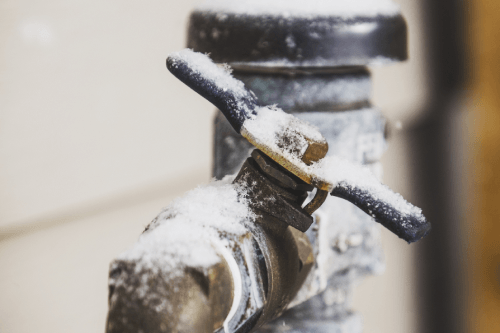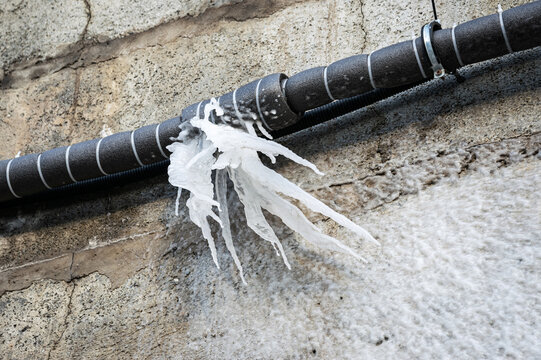Crucial Advice to Prevent Frozen Plumbing in Winter: Professional Insights
Crucial Advice to Prevent Frozen Plumbing in Winter: Professional Insights
Blog Article
What are your opinions about How to prepare your home plumbing for winter weather?

Cold weather can ruin your pipes, specifically by freezing pipes. Right here's how to prevent it from taking place and what to do if it does.
Intro
As temperatures drop, the risk of icy pipelines boosts, potentially bring about expensive repair work and water damages. Comprehending how to stop icy pipes is critical for house owners in cold climates.
Comprehending Icy Pipes
What triggers pipes to ice up?
Pipelines freeze when revealed to temperature levels below 32 ° F (0 ° C) for extended periods. As water inside the pipelines freezes, it increases, taxing the pipeline wall surfaces and possibly causing them to rupture.
Dangers and damages
Icy pipelines can lead to supply of water interruptions, building damages, and costly repair services. Ruptured pipes can flooding homes and cause extensive architectural damages.
Indications of Frozen Pipeline
Identifying icy pipelines early can avoid them from bursting.
Just how to determine frozen pipelines
Try to find lowered water flow from taps, unusual smells or sounds from pipes, and noticeable frost on subjected pipes.
Avoidance Tips
Protecting vulnerable pipelines
Wrap pipelines in insulation sleeves or utilize heat tape to shield them from freezing temperatures. Concentrate on pipelines in unheated or outside areas of the home.
Heating techniques
Maintain indoor areas appropriately warmed, particularly areas with plumbing. Open up closet doors to enable cozy air to flow around pipelines under sinks.
Protecting Outdoor Plumbing
Garden tubes and exterior faucets
Detach and drain garden tubes prior to wintertime. Mount frost-proof faucets or cover outside faucets with insulated caps.
What to Do If Your Pipelines Freeze
Immediate activities to take
If you think frozen pipes, maintain taps available to ease stress as the ice melts. Use a hairdryer or towels taken in hot water to thaw pipelines slowly.
Long-Term Solutions
Architectural adjustments
Take into consideration rerouting pipes far from exterior wall surfaces or unheated areas. Include extra insulation to attics, cellars, and crawl spaces.
Updating insulation
Invest in top notch insulation for pipes, attics, and wall surfaces. Proper insulation assists preserve regular temperatures and minimizes the threat of icy pipes.
Final thought
Protecting against frozen pipes needs positive steps and quick feedbacks. By comprehending the causes, signs, and safety nets, home owners can safeguard their plumbing throughout cold weather.
Helpful Tips to Prevent Frozen Pipes this Winter
UNDERSTANDING THE BASICS: WHY PIPES FREEZE AND WHY IT’S A PROBLEM
Water freezing inside pipes is common during the winter months, but understanding why pipes freeze, and the potential problems it can cause is crucial in preventing such incidents. This section will delve into the basics of why pipes freeze and the associated problems that may arise.
THE SCIENCE BEHIND FROZEN PIPES
When water reaches freezing temperatures, it undergoes a physical transformation and solidifies into ice. This expansion of water as it freezes is the primary reason pipes can burst. As the water inside the pipe freezes, it expands, creating immense pressure on the walls. If the pressure becomes too great, the pipe can crack or rupture, leading to leaks and water damage.
FACTORS THAT CONTRIBUTE TO PIPE FREEZING
Low Temperatures: Extremely cold weather, especially below freezing, increases the risk of pipes freezing. Uninsulated or Poorly Insulated Pipes: Pipes located in unheated areas, such as basements, crawl spaces, or attics, are more prone to freezing. Insufficient insulation or lack of insulation altogether exacerbates the problem. Exterior Wall Exposure: Pipes running along exterior walls are susceptible to freezing as they encounter colder temperatures outside. Lack of Heating or Temperature Regulation: Inadequate heating or inconsistent temperature control in your home can contribute to frozen pipes. PROBLEMS CAUSED BY FROZEN PIPES
- Pipe Bursting: As mentioned earlier, the expansion of water as it freezes can cause pipes to burst, resulting in significant water damage.
- Water Damage: When pipes burst, it can lead to flooding and water damage to your property, including walls, ceilings, flooring, and personal belongings.
- Structural Damage: Prolonged exposure to water from burst pipes can compromise the structural integrity of your home, leading to costly repairs.
- Mold and Mildew Growth: Excess moisture from water damage can create a favorable environment for mold and mildew growth, posing health risks to occupants.
- Disrupted Water Supply: Frozen pipes can also result in a complete or partial loss of water supply until the issue is resolved.
WHY CERTAIN PIPES ARE MORE PRONE TO FREEZING
- Location: Pipes located in unheated or poorly insulated areas, such as basements, crawl spaces, attics, or exterior walls, are at higher risk of freezing.
- Exterior Pipes: Outdoor pipes, such as those used for irrigation or exposed plumbing, are particularly vulnerable to freezing as they are directly exposed to the elements.
- Supply Lines: Pipes that carry water from the main water supply into your home, including the main water line, are critical to protect as freezing in these lines can affect your entire plumbing system.
- Underground Pipes: Pipes buried underground, such as those connected to sprinkler systems or outdoor faucets, can be susceptible to freezing if not properly insulated.
https://busybusy.com/blog/helpful-tips-to-prevent-frozen-pipes-this-winter/

I am just very enthusiastic about 6 Ways to Prevent Frozen Pipes and I hope you enjoyed reading the blog entry. Make sure you take a moment to promote this page if you liked it. Thank you for your time invested reading it.
Call Today Report this page